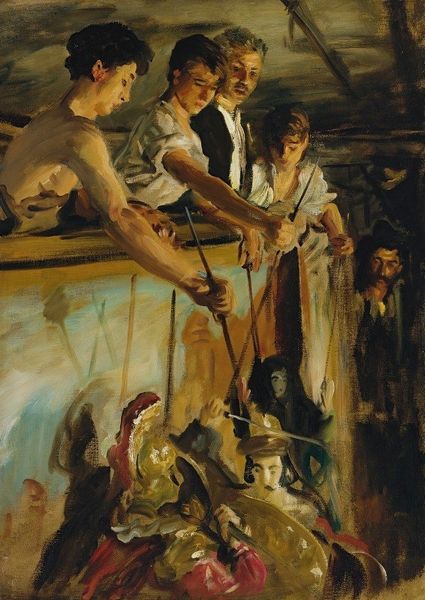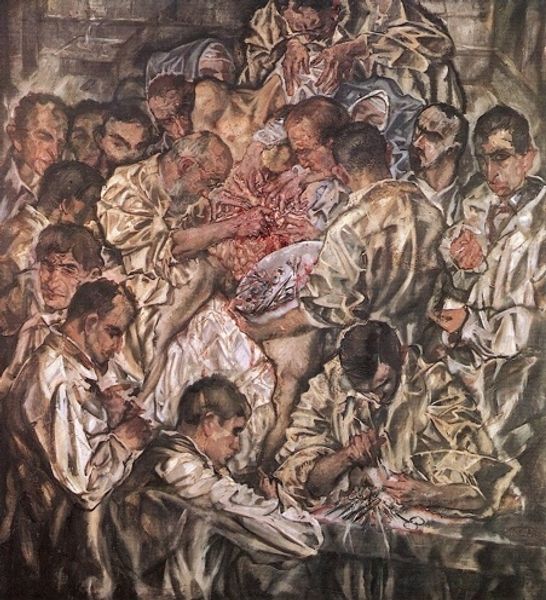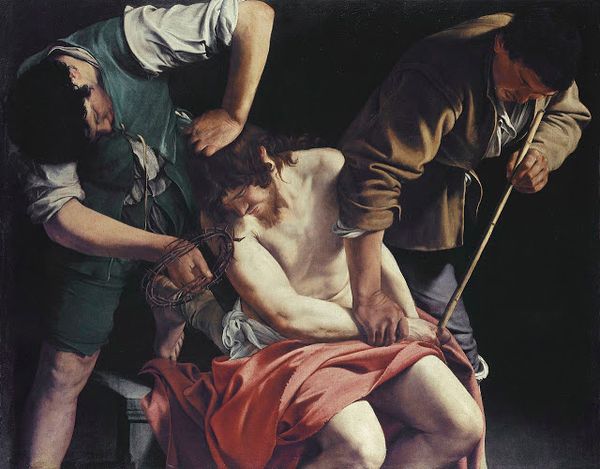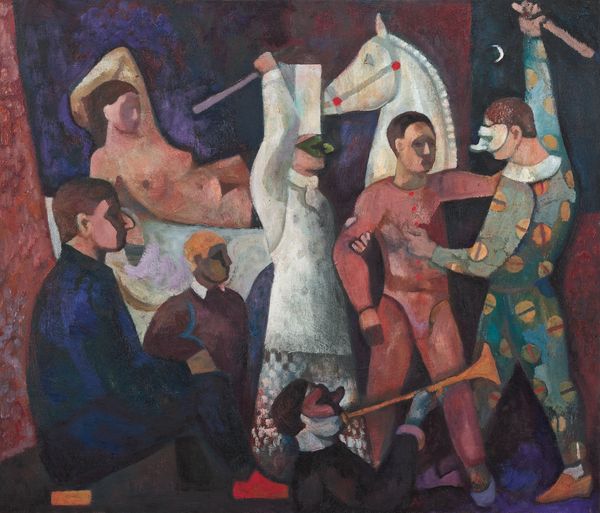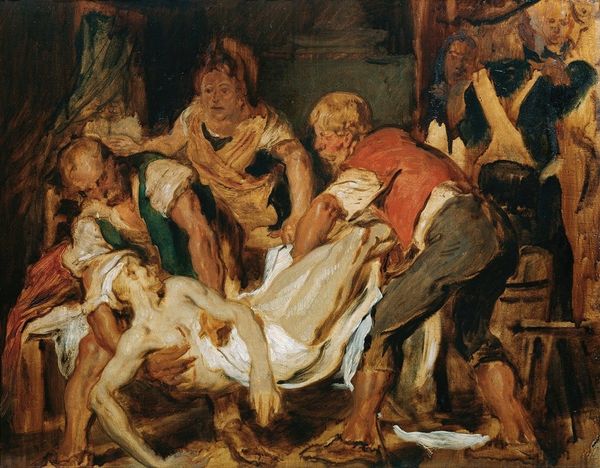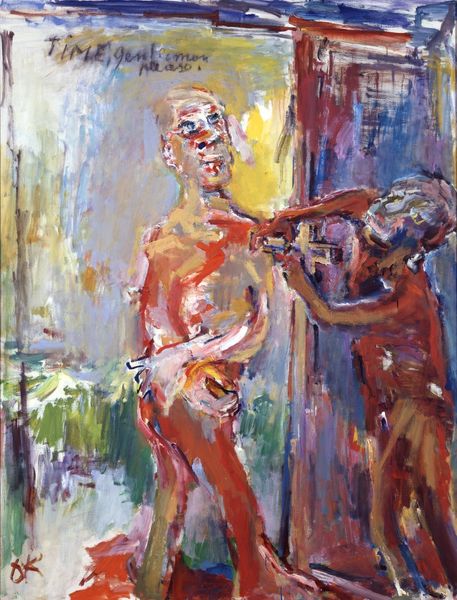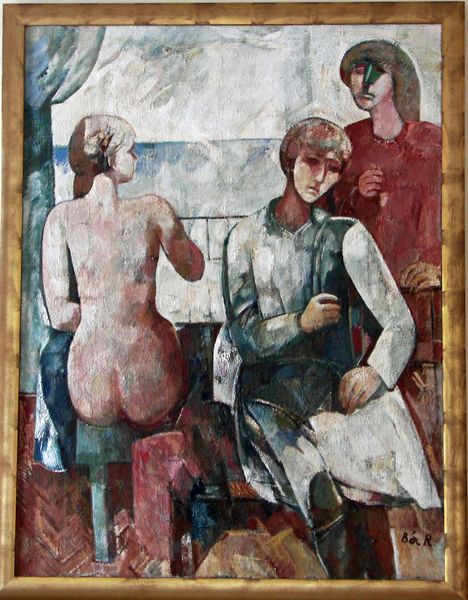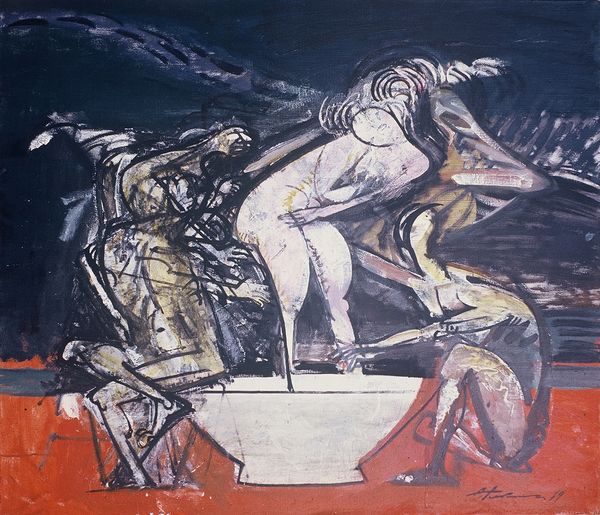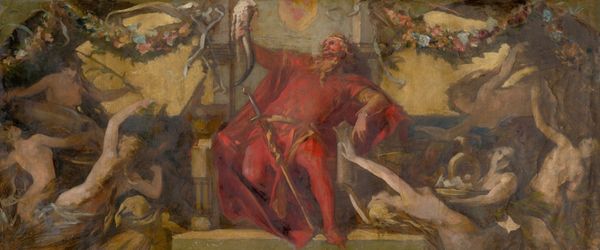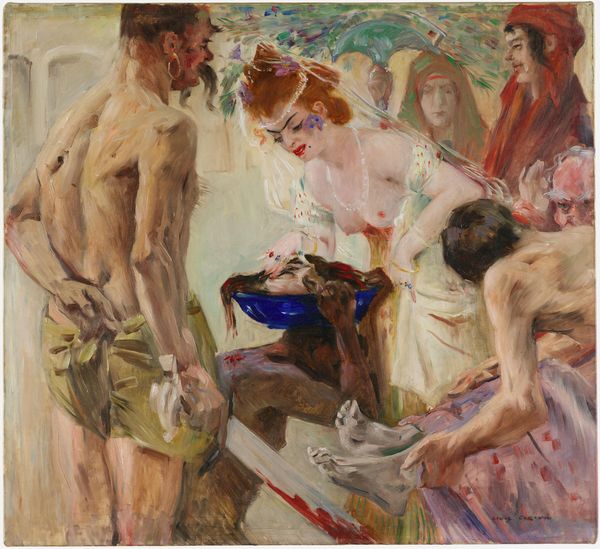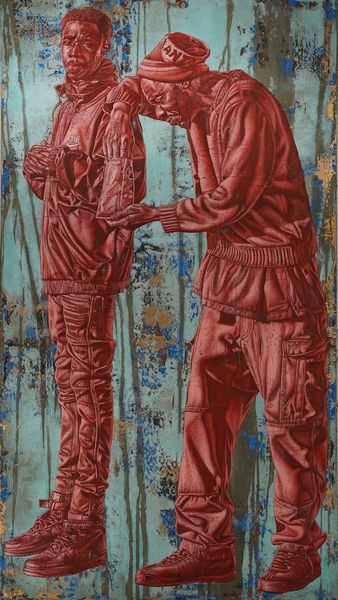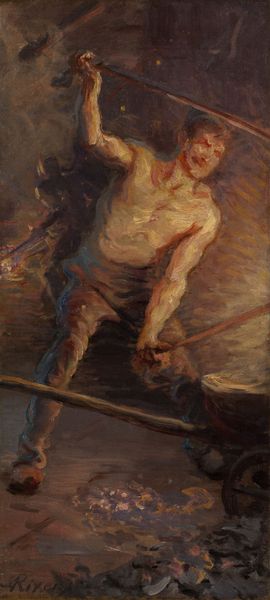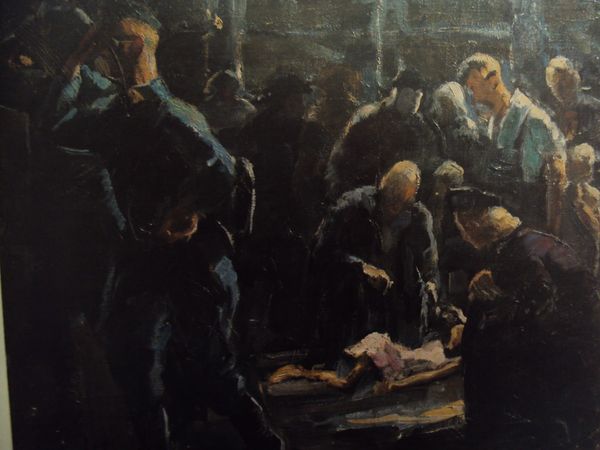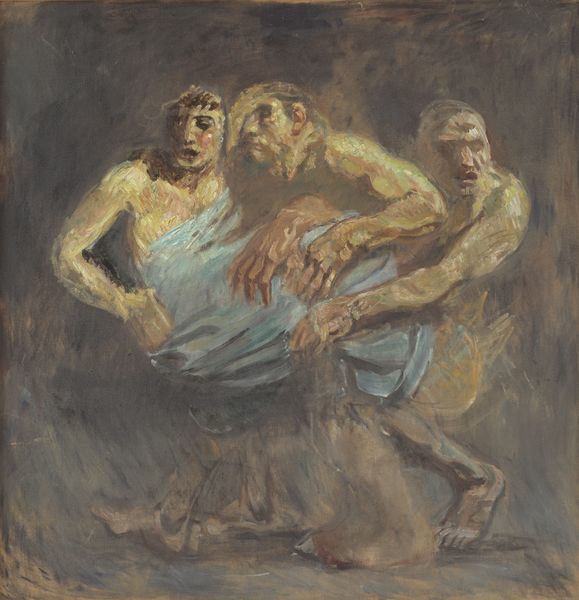
painting, oil-paint
#
portrait
#
painting
#
oil-paint
#
figuration
#
oil painting
#
neo expressionist
#
neo-expressionism
#
expressionism
#
history-painting
Copyright: Public Domain: Artvee
Curator: Here we have Lovis Corinth’s “Ecce Homo,” painted in 1925, relatively late in his career. It's an oil painting that offers a raw, visceral interpretation of the biblical scene. Editor: My first impression is one of discomfort, honestly. The painting’s brutality hits you immediately. The blood, the distorted figures… It’s an unsettling image. Curator: Corinth’s "Ecce Homo" arrives relatively late within the history of this theme of political and religious imagery. Its presentation of Christ reflects both a personal and collective anguish felt in post-World War I Germany. The scarred, almost grotesque portrayal departs from idealized depictions we're accustomed to. Editor: Absolutely, this isn't a triumphant or even serenely suffering Christ. This is a broken, defeated figure, presented as a critique of power. The way Corinth captures the flesh tones, the almost feverish red, suggests profound suffering and perhaps implicates the viewer as a participant in this act of violence. It invites us to consider who benefits from such brutality. Curator: Corinth's use of visible brushstrokes contributes significantly to the emotional intensity. There’s a sense of immediacy, of witnessing something unfolding in real time, forcing the viewer to confront uncomfortable truths about power and injustice. The figures surrounding Christ are not mere observers; they are active participants. Editor: And the setting, while vaguely suggested, seems less about historical accuracy and more about timeless relevance. It feels deliberately devoid of specific markers, making the scene applicable to any era where power oppresses the vulnerable. It is easy to connect to other more modern representations. This can also be understood within an anti-war stance. Curator: Yes, that universalizing effect is key. "Ecce Homo" serves not just as a historical representation but as a potent commentary on the human condition. It reveals uncomfortable truths about the dynamics of power, guilt, and complicity. It forces us to confront these issues. Editor: I think ultimately this painting's power resides in its unflinching willingness to confront the darkest aspects of humanity and to raise questions about responsibility in the face of suffering. Curator: It invites sustained viewing and consideration within a historical framework while allowing space for new discussions. Editor: Leaving a space open to the social and political relevance of such depiction.
Comments
No comments
Be the first to comment and join the conversation on the ultimate creative platform.
